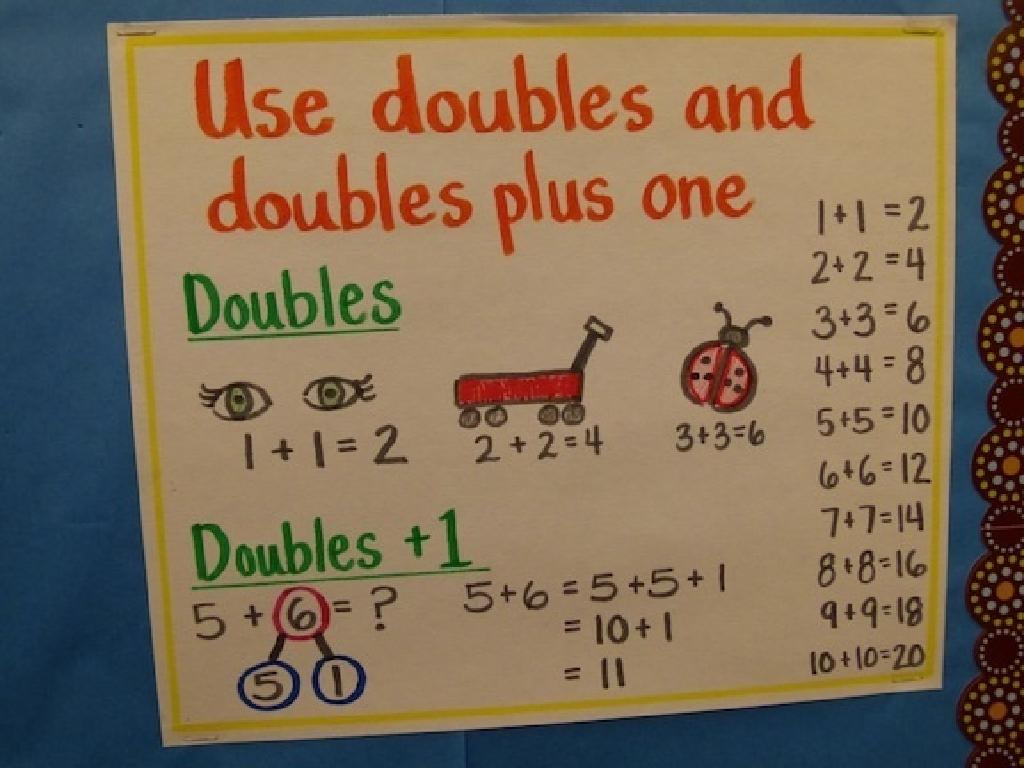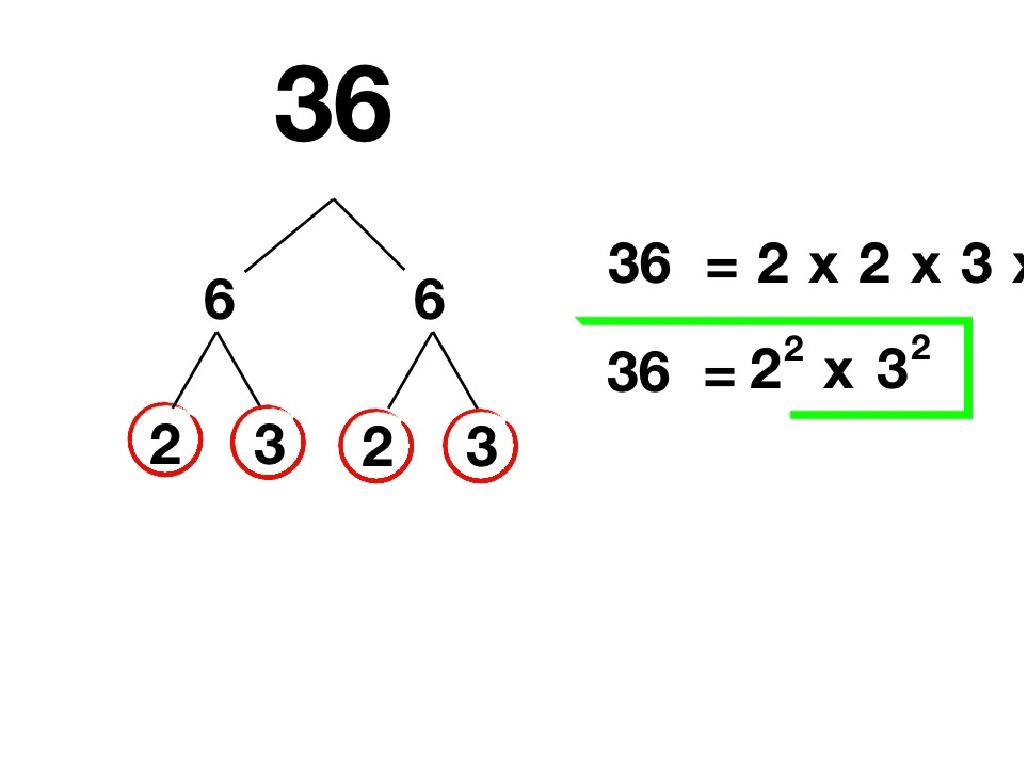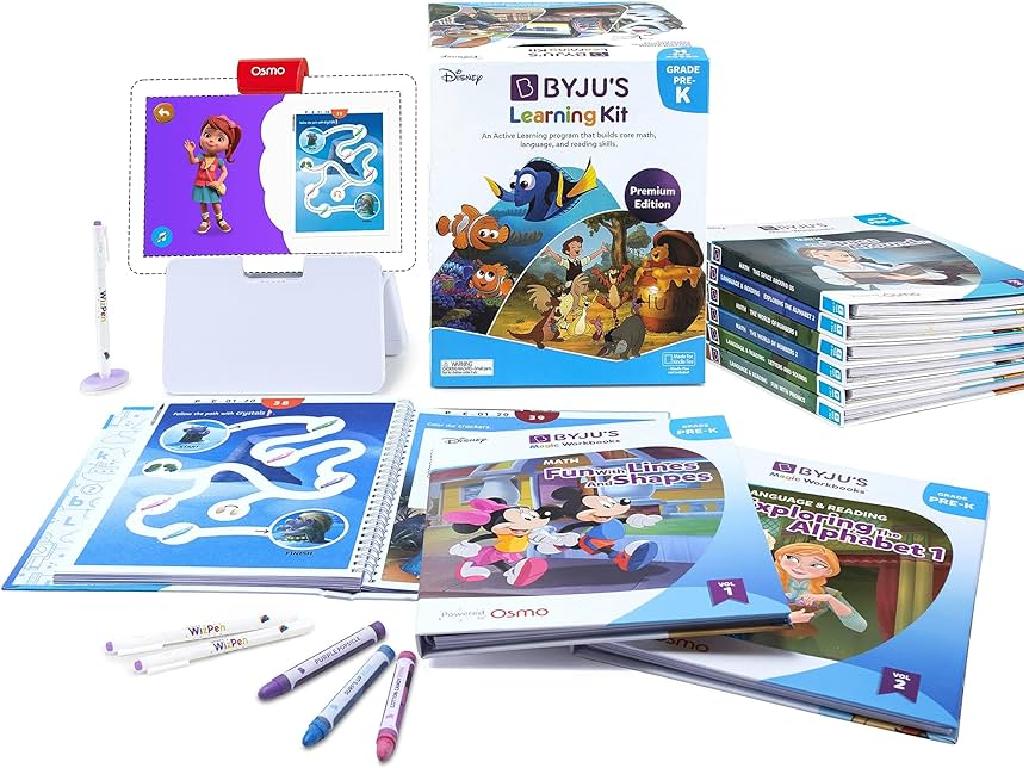Interpret Bar Graphs
Subject: Math
Grade: Sixth grade
Topic: Data And Graphs
Please LOG IN to download the presentation. Access is available to registered users only.
View More Content
Interpreting Bar Graphs
– Learn data vocabulary
– Terms like ‘data’, ‘scale’, ‘axis’, ‘frequency’
– Visualize data with graphs
– Graphs turn numbers into pictures
– Focus on bar graphs
– Bar graphs compare different groups
– Practice interpreting data
– We’ll analyze bar graphs together
|
This slide introduces students to the concept of interpreting bar graphs, a key component of data visualization in mathematics. Start by familiarizing students with essential data vocabulary, which will help them understand and discuss graphs effectively. Explain how graphs, especially bar graphs, serve as tools to turn complex data into easily understandable visual formats. Emphasize that bar graphs are particularly useful for comparing quantities across different categories. During the lesson, engage students with examples of bar graphs, asking them to interpret the data and draw conclusions based on the visual information presented. Encourage participation and provide guidance on how to read the scale and axis to understand the frequency and magnitude of the data represented.
Understanding Bar Graphs
– Define a Bar Graph
– A visual representation using bars to show comparisons among categories.
– Key Components of Bar Graphs
– Includes title, axis labels, bars for data, and a scale to indicate values.
– Comparing Bar Graphs to Other Graphs
– Bar graphs show discrete data, unlike line graphs which depict continuous data.
– Utilizing Bar Graphs Effectively
|
This slide introduces students to the concept of bar graphs, a fundamental tool in data representation. Begin by defining a bar graph as a chart that represents data with rectangular bars with lengths proportional to the values they represent. Discuss the essential components such as the title, which gives an overview of the data; the axes, which indicate the categories and values; the bars themselves, which represent the data; and the scale, which helps quantify the data. Compare bar graphs with other types of graphs, highlighting that bar graphs are particularly useful for comparing discrete data across categories, unlike line graphs or pie charts. Encourage students to think about why and when we use bar graphs and how they help us interpret data quickly and easily.
Reading Bar Graphs
– Identify the graph’s title
– The title gives us the topic of the data
– Understand X-axis and Y-axis
– X-axis shows categories, Y-axis shows values
– Recognize the scale and interval
– Scale determines the value range, interval is the division between values
– Analyze data with accuracy
|
This slide is aimed at teaching students how to effectively read and interpret bar graphs. Start by explaining the importance of the title in giving context to the data presented. Then, move on to the axes; the X-axis typically represents the categories being compared, while the Y-axis shows the values associated with each category. Discuss how the scale and intervals on the Y-axis help us understand the range of data and the precision of the values. Encourage students to practice by looking at various bar graphs and identifying these key components. This will help them analyze the data presented with accuracy and develop critical thinking skills in interpreting graphical information.
Interpreting Bar Graphs
– Compare data with bar lengths
– Longer bars represent larger values, allowing for quick comparisons.
– Identify patterns and trends
– Look for increases, decreases, or consistent data over time or categories.
– Make inferences from data
– Use the information to draw conclusions or predict future outcomes.
– Practice with real-life graphs
|
This slide introduces students to the skills needed to interpret bar graphs effectively. Start by explaining how the length of the bars makes it easy to compare different data points. Then, guide students to look for patterns or trends in the data, such as which items are most or least common, or if there’s a progression over time. Teach them to make inferences based on the graph, like predicting trends or understanding the story the data tells. Provide examples of real-life bar graphs, such as class test scores or favorite school lunch items, and have students practice these skills. Encourage critical thinking by asking why certain bars are longer and what that might mean in the context of the data.
Let’s Practice: Interpreting Bar Graphs
– Analyze ‘Class Pet Preferences’ graph
– Consider key questions on the data
– What pet is most/least popular? Why might this be?
– Discuss findings with a classmate
– Explain your interpretation and reasoning
– Share observations with the class
– Be prepared to present your discussion points
|
This slide is designed as an interactive class activity to practice interpreting bar graphs. Present a bar graph titled ‘Class Pet Preferences’ and ask students to analyze the data presented. Provide a set of questions to guide their analysis, such as identifying the most and least popular pets and considering reasons for these preferences. Students should then pair up to discuss their observations, encouraging them to use mathematical language and reasoning. After the discussion, each pair will share their insights with the class, fostering a collaborative learning environment. As a teacher, facilitate the discussion by asking probing questions and highlighting interesting points made by the students. This activity not only reinforces their understanding of bar graphs but also develops their communication and critical thinking skills.
Real-World Applications of Bar Graphs
– Bar graphs in various fields
– Used in science, business, and more to compare data
– Analyzing graphs in news
– Understand real-world issues through news graph analysis
– Activity: Craft a bar graph
– Use personal data to create a graph
|
This slide aims to show students the practical uses of bar graphs in everyday life and professional settings. Bar graphs are essential tools for comparing data in fields such as science, business, and even sports. Encourage students to look for bar graphs in news articles and analyze the information presented. For the activity, students will collect their own data, such as favorite school subjects or daily screen time, and create a bar graph. This hands-on experience reinforces their understanding of data representation. Provide guidelines for creating a bar graph, including labeling axes, choosing an appropriate scale, and writing a title. Offer several activity options to cater to different interests: 1) Graphing favorite genres of music among classmates, 2) Comparing the number of hours spent on homework vs. leisure activities, 3) Charting different types of pets owned by students in the school.
Bar Graph Bonanza: Group Analysis
– Analyze a bar graph as a group
– Each group presents their analysis
– Share what the graph represents and your findings
– Discuss interpretations as a class
– Understand that different groups may have varying perspectives
– Reflect on the activity and learnings
– What did we learn from this activity?
|
This class activity is designed to foster collaborative learning and critical thinking. Divide the class into small groups and provide each with a different bar graph to analyze. Encourage students to discuss within their groups what the graph represents, including the title, labels, scale, and the information it conveys. After the analysis, each group will present their findings to the class, explaining their interpretation of the data. Following the presentations, lead a class discussion to explore how different groups may have interpreted the graphs differently and why. Conclude the activity by reflecting on what was learned about interpreting bar graphs and the importance of considering various perspectives. Possible activities for different groups could include comparing two related graphs, analyzing a graph with missing labels and inferring their meaning, or creating a bar graph based on provided data.
Wrapping Up: Bar Graphs & Homework
– Review of interpreting bar graphs
– Emphasize the value of practice
– Homework: Bar Graph Hunt
– Find a real-life bar graph in a newspaper, online, etc.
– Describe your findings
– Write a paragraph on what the graph’s data conveys
|
As we conclude today’s lesson on bar graphs, it’s important to recap the key points of interpreting data from bar graphs. Emphasize to students that practice is crucial for mastering this skill. For homework, students are tasked to find a bar graph ‘in the wild,’ such as in a newspaper, magazine, or online, and write a brief description of what the graph illustrates. This will help them apply what they’ve learned in a real-world context. Encourage them to consider what the data is telling the reader and to think critically about how the information is presented. In the next class, be prepared to discuss the variety of graphs found and the insights they provide.






